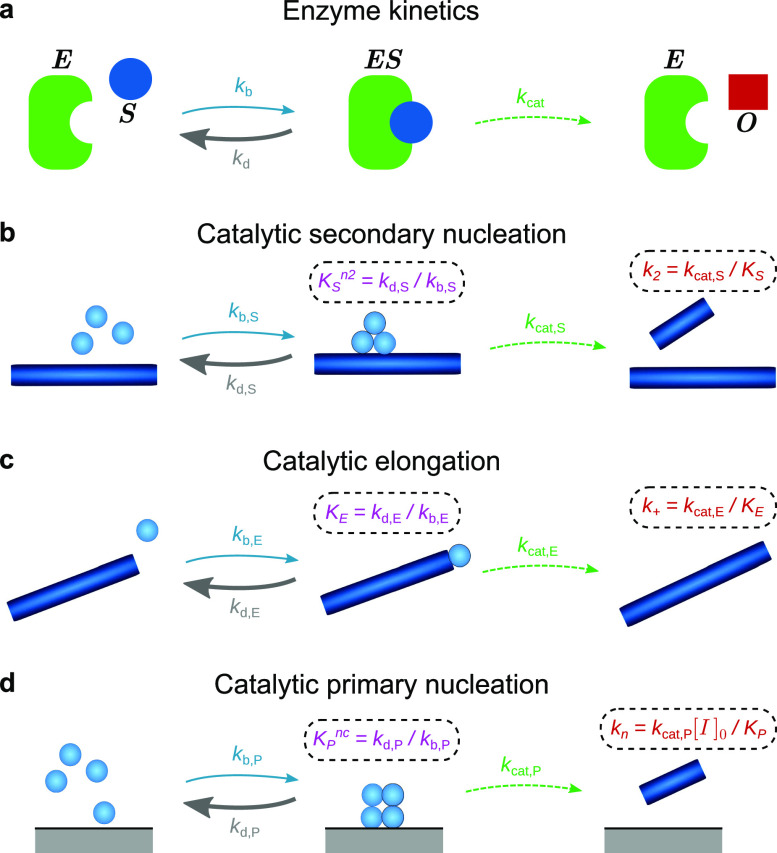FIG. 1.
The catalytic nature of key reaction processes in biofilament assembly. (a) Catalytic conversion of substrate S to product O by an enzyme E, featuring an intermediate enzyme-substrate complex. (b) In secondary nucleation, the fibril surface acts as a catalyst. (c) In elongation, the growing fibril ends act as a catalyst. Although the chemical species (a shorter fibril) is not regenerated, the pseudospecies (the fibril end) is. (d) In heterogeneous primary nucleation, any surface or interface (we denote the total concentration of binding sites on the interface as ) present in the reaction vessel may act as a catalyst. In all cases, where the concentration is high enough, the surface may become completely saturated with monomers; at this point, further increases in concentration do not affect the rate, which is then given simply by kcat · [catalyst]t=0. The 50% binding concentration Kx () is given by setting the intermediate bound state to steady-state, and in the usual case that is approximately the dissociation constant for the corresponding dissociation reaction. We may thus interpret Kx as the geometric mean of the dissociation constants for each fundamental step in the dissociation reaction.

